Introduction
Social media is becoming an essential part of every effective marketing strategy in the modern digital era.
However, measuring and improving social media ROI can be a challenge for businesses of all sizes.
In this article, we will explore 10 key steps to help you prove and improve your social media ROI, including setting clear goals, identifying metrics, tracking customer lifetime value, etc.
Additionally, we will introduce a free calculator that can help businesses measure their social media ROI and make informed decisions about their marketing efforts.
By following these steps and using data-driven insights, businesses can increase brand awareness, drive engagement, and achieve measurable results.
What is social media ROI ?
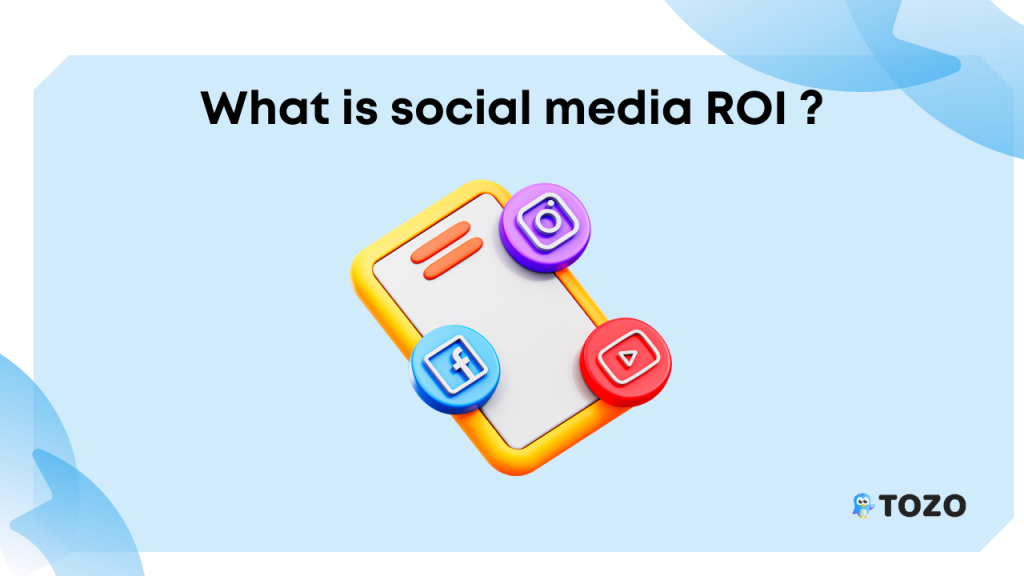
Social media ROI, which stands for Return on Investment, is a way to measure how much money a company makes from its social media marketing.
It measures the benefits generated by social media marketing campaigns against the costs of those campaigns.
Benefits can include increased brand awareness, engagement, website traffic, lead generation, and sales.
Measuring social media ROI helps organizations decide if their marketing efforts are profitable.
This information can be used to adjust marketing strategies and ensure that social media efforts are aligned with business objectives.
Social media ROI can assist stakeholders understand and justify social media marketing investments.
10 Steps to prove & improve your social media ROI
1. Define your goals:
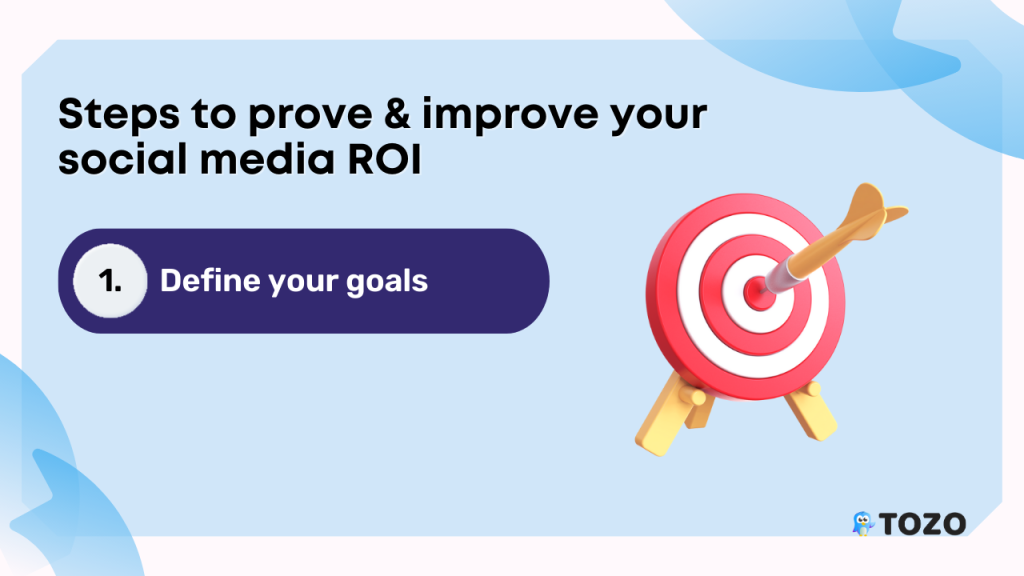
Defining your goals is a critical first step in measuring your social media ROI.
Your objectives should be time-bound, relevant, quantifiable, reachable, and explicit.
This means that you should have a clear idea of what you want to achieve, how you will measure success, and when you want to achieve it.
For example, if you want to increase website traffic, you might set a goal of increasing traffic by 20% in the next three months.
Or, if you want to generate leads through social media, you might set a goal of generating 100 leads in the next six months.
Having clear and specific goals will help you to focus your social media efforts and measure your progress over time.
2. Track your metrics :
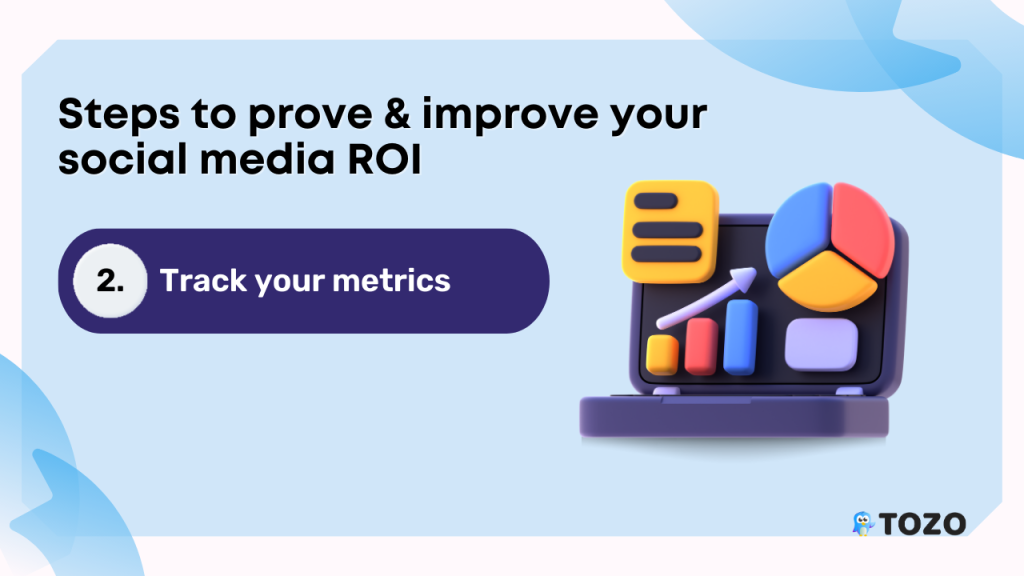
Once you’ve defined your goals, you need to track your metrics.
Metrics are the quantitative measures that you will use to determine whether or not you are achieving your goals.
Examples of metrics include website traffic, engagement rate, reach, clicks, and conversions.
It’s important to track your metrics regularly and consistently so that you can see how your social media efforts are affecting your business.
Tracking your metrics will help you to identify which social media channels are working best for you, which types of content are most effective, and which tactics need to be adjusted.
3. Calculate your ROI :
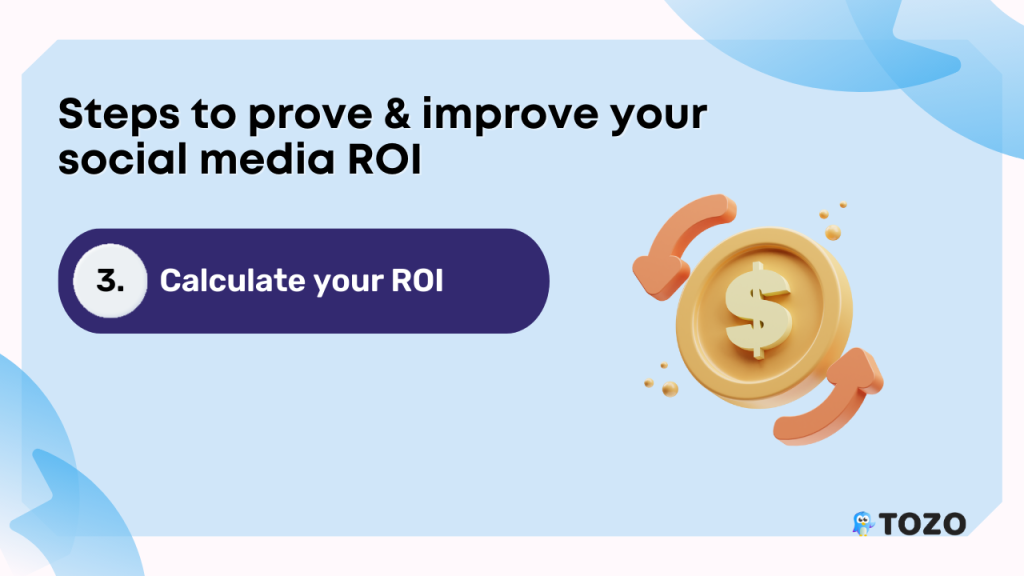
Calculating your social media ROI can be challenging, but it’s an essential step in measuring the financial return on your social media investment.
To calculate your ROI, you need to measure the revenue generated from your social media efforts and compare it to the cost of those efforts.
The formula for calculating ROI is:
ROI is determined by dividing the cost by 100.
Your ROI, for instance, would be as follows if you spent $1,000 on social media advertising and made $5,000 in sales:
ROI = ($5,000 – $1,000) / $1,000 x 100 = 400%
4. Use a free social media ROI calculator :
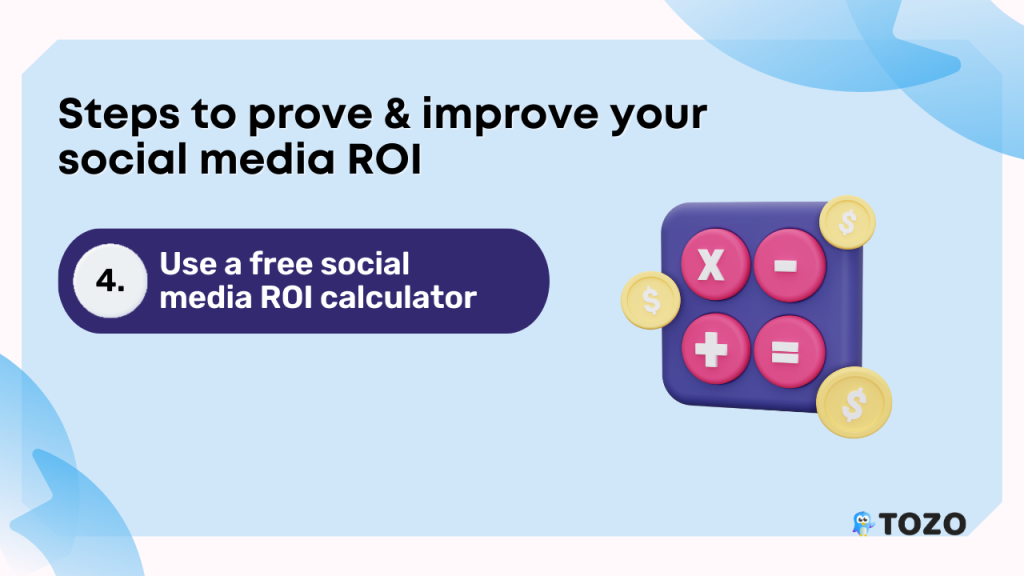
Using a free social media ROI calculator can simplify the process of calculating your ROI.
These calculators can help you to input your data and automatically calculate your ROI
Some popular free social media ROI calculators include Hootsuite’s Social ROI Calculator,
HubSpot’s Social Media ROI Calculator, and Sprout Social’s Social Media ROI Calculator.
These calculators can help you to determine the financial return on your social media investment and identify areas for improvement.
5. Analyze and Improve :
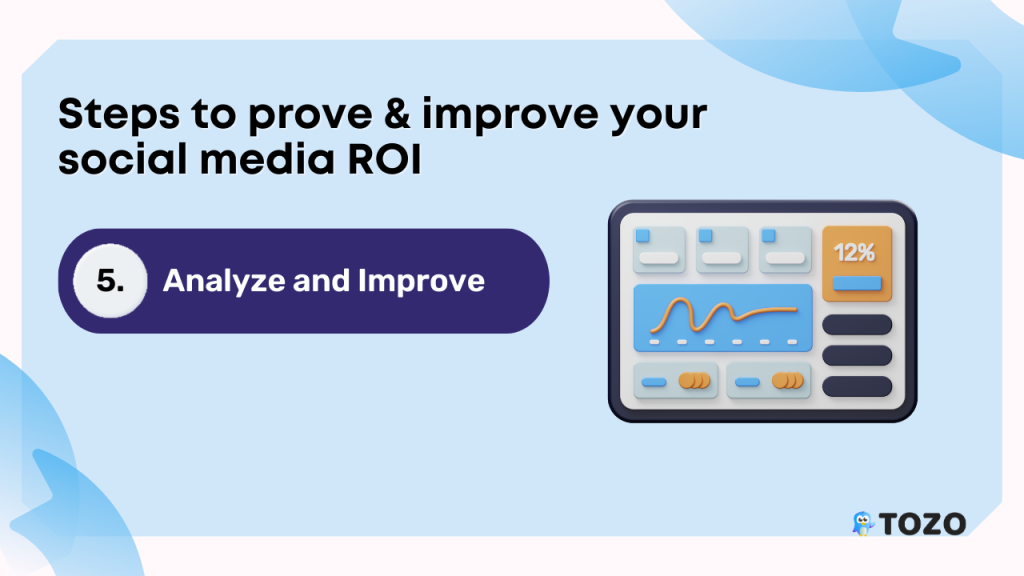
Once you have calculated your social media ROI, you need to analyze the results and determine what is working and what needs improvement.
You might need to change your strategy or methods if you aren’t accomplishing your aims.
For example, if your engagement rate is low, you may need to create more engaging content or adjust your posting schedule.
Analyzing your results regularly will help you to identify trends and patterns and make informed decisions about your social media strategy.
By constantly evaluating and improving your social media efforts, you can increase your ROI and achieve your business goals.
6. Use A/B Testing :
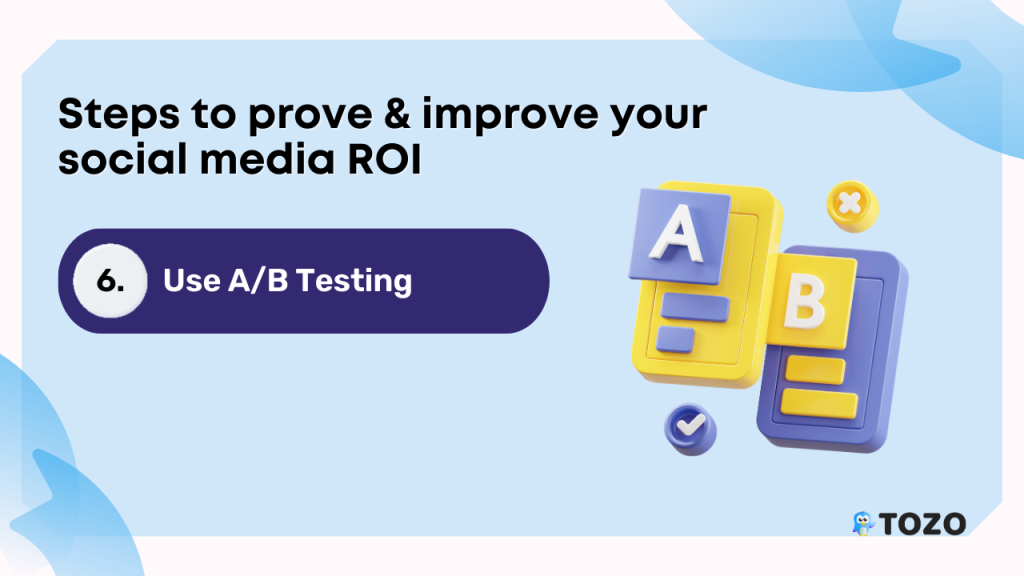
A/B testing is a method of comparing two versions of a piece of content or campaign to see which performs better.
By running A/B tests on your social media posts and campaigns, you can identify which variations generate more engagement, clicks, and conversions.
For example, you could test two different headlines for the same blog post or two different images for a Facebook ad.
Variation as a baseline and continue to iterate and improve your social media content.
You can test further variations and continue to optimize your content to achieve even better results.
It’s important to keep in mind that A/B testing is an ongoing process, not a one-time activity.
As your audience and social media platforms evolve, your social media content and strategy should also adapt and change.
By regularly testing and optimizing your content, you can stay ahead of the competition and achieve better social media ROI.
7. Measure Brand Awareness :
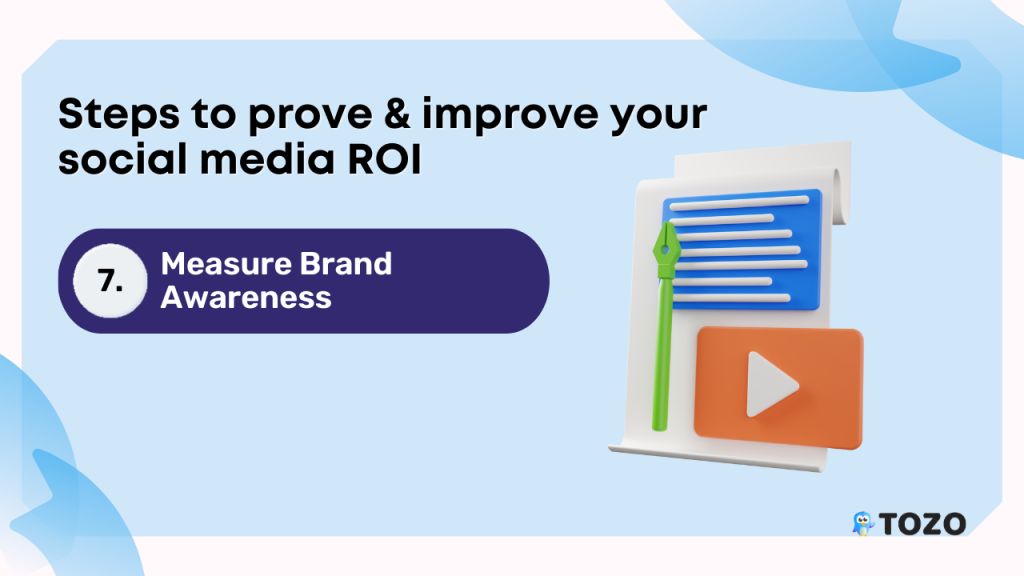
While revenue generation is often the primary goal of social media marketing, it’s also important to measure brand awareness.
Brand awareness metrics include impressions, reach, and share of voice.
By measuring brand awareness, you can determine how well your social media efforts are positioning your brand in the market.
If you are seeing an increase in brand awareness, it can lead to increased revenue in the long term.
Measuring brand awareness on social media is crucial to understanding how your brand is being perceived and how your content is resonating with your target audience.
Social media has become a popular platform for consumers to interact with brands and share their experiences, making it a valuable source of feedback for businesses.
Reach, impressions, social media mentions, follower growth, and share of voice can reveal how many people are seeing your brand and how they feel about it.
This data can be utilized to tweak your social media strategy to boost brand exposure and audience engagement.
8. Track Customer Lifetime Value :
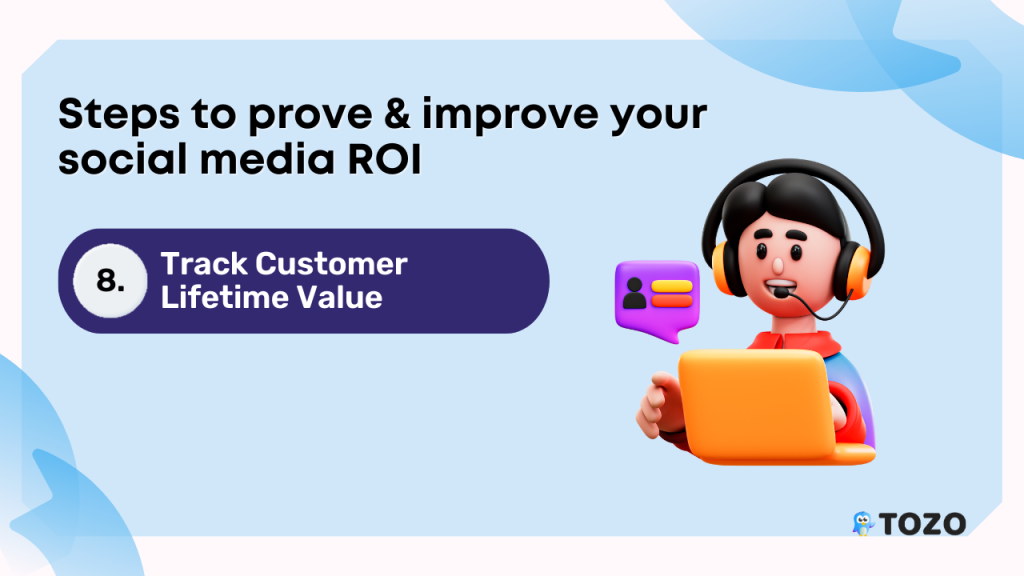
Tracking customer lifetime value is an important step in improving and proving your social media ROI.
Customer lifetime value (CLV) measures the total revenue a customer is expected to generate for your business over their lifetime.
By tracking this metric, you can determine the long-term value of your social media marketing efforts and better allocate your resources.
There are several factors that can impact CLV, including customer acquisition costs, customer retention rates, and average order value.
By analyzing these factors and identifying opportunities to improve them, you can increase CLV and improve your social media ROI.
Tracking CLV also allows you to identify high-value customers and tailor your social media marketing efforts to engage and retain them.
For example, you can use targeted advertising to reach customers who are likely to generate higher CLV, or create loyalty programs to incentivize repeat purchases.
9. Leverage Influencer Marketing :
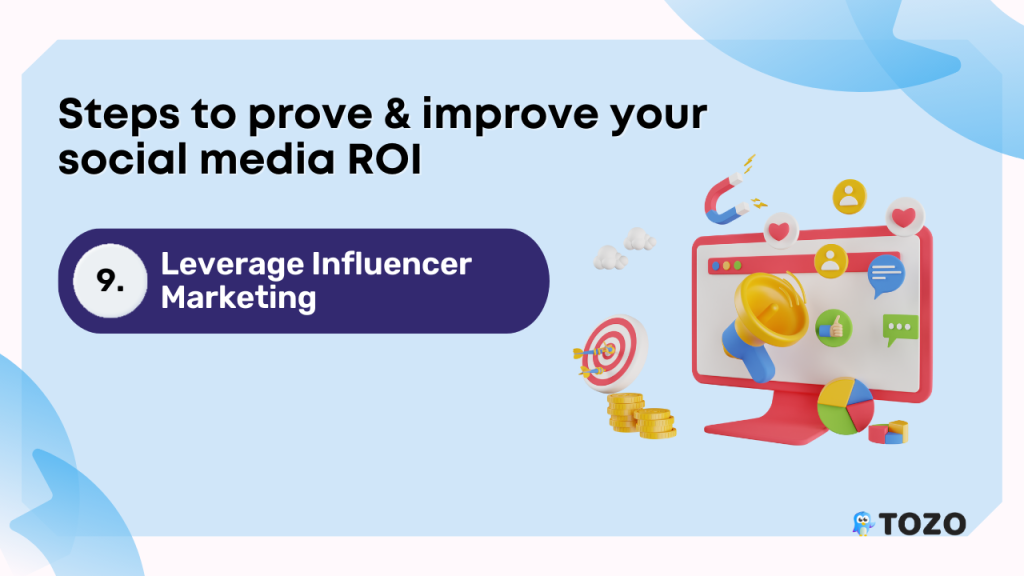
Influencer marketing has become an increasingly popular way for businesses to improve their social media ROI.
By partnering with influencers who have a large and engaged following, businesses can reach new audiences and increase brand awareness.
When using influencer marketing, find influencers who share your brand values and reach your target audience.
You should also establish clear goals for your influencer campaign, whether it’s to increase brand awareness, drive traffic to your website, or generate sales.
Micro-influencers, with smaller yet highly engaged following, can be used in influencer marketing initiatives.
These influencers may be more affordable to work with and can still have a significant impact on your social media ROI.
10. Monitor and Respond to Feedback :
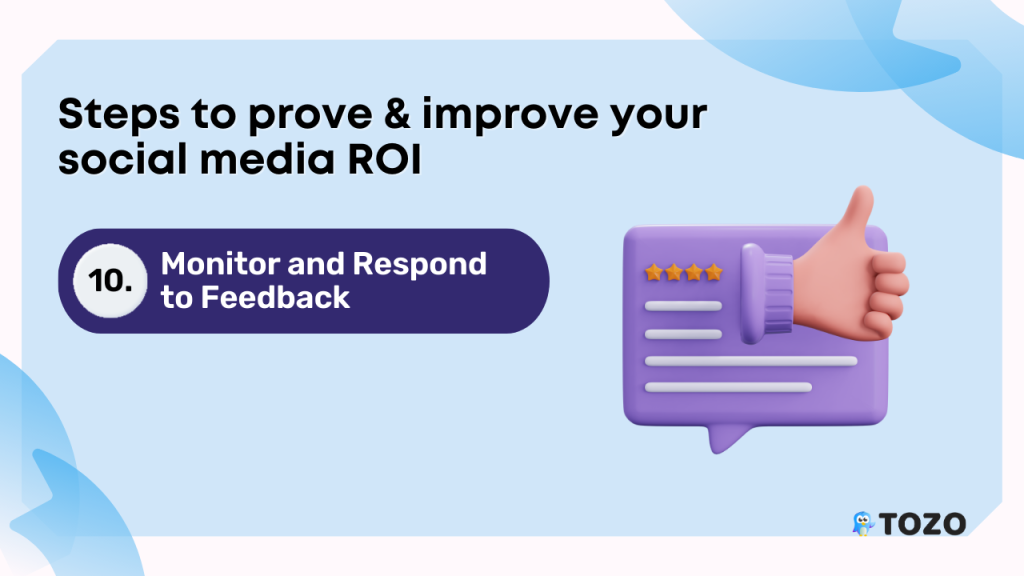
Monitoring and responding to feedback is a critical step in improving and proving your social media ROI.
Businesses must respond to both favorable and negative feedback on social media.
Businesses may improve their brand image by monitoring social media conversations and feedback.
They can also respond to customer feedback in a timely and personalized manner, which can help build customer loyalty and improve brand reputation.
Businesses should also actively solicit customer feedback through surveys or other means.
This can help identify customer pain points and areas for improvement, which can then be addressed through targeted social media campaigns or other marketing efforts.
Conclusion
Enhancing and demonstrating your social media return on investment is a crucial objective for enterprises aiming to attain lasting expansion in the contemporary digital terrain.
Businesses can improve their social media strategy by creating goals, measuring analytics, using influencer marketing, and monitoring feedback.
Additionally, Utilizing a no-cost calculator to evaluate social media return on investment can furnish significant perceptions and enable enterprises to make informed judgments regarding their promotional endeavors.
Businesses may boost brand exposure, consumer engagement, and revenue by constantly improving their social media approach.



